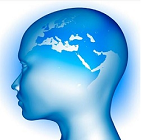Regional Maritime Security: The Phillipines

Situational Awareness (SA) is all about having the information you need to make effective decisions. There will always be occasions when people are required to make critical choices – sometimes at a fast pace – and the vast majority of errors that can occur are as a direct result of failure in situational awareness.
For the majority of vessels and crew visiting Southeast Asia, it will be a very familiar sight, however for some it may be their first time and often, as with many locations across the globe, looks can be deceiving and can lull people into a false sense of security.
Below are exerpts from the Allmode Security Report on the Phillipines.
You can read the full report here
The Philippines Overview
Typhoon season in the Philippines begins in June and ends in November. This is also the wet season with tropical storms, flooding and landslides.
In 2013, the Philippines experienced 24 typhoons. In February 2013, heavy rains from the storm Shanshan caused flooding in the southern Philippines that killed four people and left two others missing.
Some areas of the Philippines are at risk to earthquakes.
There are 53 active volcanoes in the Philippines. They can erupt unexpectedly, without warning. The risk of lava flows increases after heavy rainfall. The most known volcanoes in the Philippines are Mount Pinatubo, Mount Mayon and the Taal volcano on the northern island Luzon. In May 2013, the Mayon volcano erupted, killing five climbers and injuring eight other people.
There is a high threat of kidnapping in the Philippines, particularly in the south, including coastal and island tourist resorts and dive sites as well as in remote locations in the Sulu Sea and along the Zamboanga Peninsula.
In kidnapping cases, including those perpetrated by organized crime groups, terrorist groups and other individuals, were recorded.
It is advised not to travel to eastern Mindanao (including the provinces of Bukidnon,Camiguin, Misamis Oriental, Compostela Valley, Davao del Norte, Davao del Sur, Agusan del Norte, Agusan del Sur, Surigao del Norte and Surigao del Sur) as they are regions with very high levels of violent crime and the high threat of terrorist attack and kidnapping.
Other not recommended parts of the Philippnes are central and western Mindanao (including the provinces of Zamboanga del Norte, Zamboanga del Sur, Zamboanga Sibugay, Lanao del Sur, Lanao del Norte, Cotabato City, North Cotabato, South Cotabato, Saranggani, Misamis Occidental, Sultan Kudarat, Maguindanao and the Sulu Archipelago and surrounding waters).
Abu Sayyaf has been responsible for numerous tourist abductions over the past few years. Some figures suggest the group has collected over $35 million in ransom fees.
Health Advisory
The standard of medical facilities in the Philippines is satisfactory in most important cities,but quite limited in provincial regions and remote islands. Major private hospitals, especially in Metro Manila, are well equipped and internationally accredited. In most cases you have to pay before you receive medical assistance or treatment.
Malaria is a disease caused by parasite called Plasmodium. It is transmitted by the bite of amosquito vector, Anopheles. The disease usually occurs in the rural and hard-to-reach areas such as in the hills, mountains and coastal areas. Disease transmission is usually higher during the rainy season.
At the 2014 Asia Pacific Malaria Elimination Network (APMEN) VI in Makati, the Philippines joined other countries in the region to work towards the elimination of malaria. As the Health Chief noted, the number of cases went down from 46,342 cases in 2005 to 7,720 in 2013.
Deaths were 150 in 2005 to 12 to last year. Of 53 endemic provinces, 27 have been declared malaria-free. They include Cavite, Batangas, Marinduque, Catanduanes, Albay, Masbate, Sorsogon, Camarines Sur, Iloilo, Aklan, Capiz, Guimaras, Bohol, Cebu, Siquijor, Western Samar, Eastern Samar, Northern Samar, Northern Leyte, Southern Leyte, Biliran, Camiguin, Surigao Del Norte, Benguet, Romblon, Batanes, and Dinagat Islands.
On 11 December 2013, there were 10,326 reported cases of dengue fever in Davao region.
The worst affected was Davao City with 6314 cases. In August 2014, the Department of Health reported more than 3,000 cases of dengue fever in the southern Philippine region of Caraga. More than 12 people have already died. According to the Regional Epidemiology and Surveillance Unit, the number of dengue cases is still rising since early this month in the region. Agusan del Sur has the largest number of cases (752) after Butuan (732). Dengue fever is transmitted through the bites of a particular mosquito, Aedes aegypti, which causes hemorrhagic fever. The virus is characterized by high fever, rash, headache and muscle and joint pains. It is advised to use insect repellents, wear long, loose fitting and light coloured clothes.
Water-borne, food-borne and parasitic diseases are also possible. It is advised to boil drinking water or drink bottled water. Besides, avoid ice cubes and raw and undercooked food. Swimming in fresh water can result in some water-borne diseases water (rivers or lakes). The symptoms include fever, muscle aches, skin rash and cough.
Leptospirosis is a bacterial infection usually acquired through rodent bites, direct contact with infected animals or cuts and open wounds exposed to contaminated flood water. In October 2013, there were more than 600 recorded cases of leptospirosis in Metro Manila. According to the Department of Health (DOH) data, the 5 worst-hit areas in the Philippines included: Metro Manila – 663 cases, Central Luzon – 375 cases, Western Visayas – 248 cases, CaLaBaRZon – 195 cases and Davao region – 140 cases.
For more information, read the full report here

Post your comment
You cannot post comments until you have logged in.
Login to post a commentComments
No one has commented on this page yet.
RSS feed for comments on this page | RSS feed for all comments